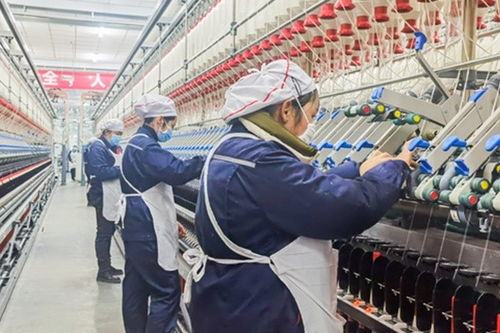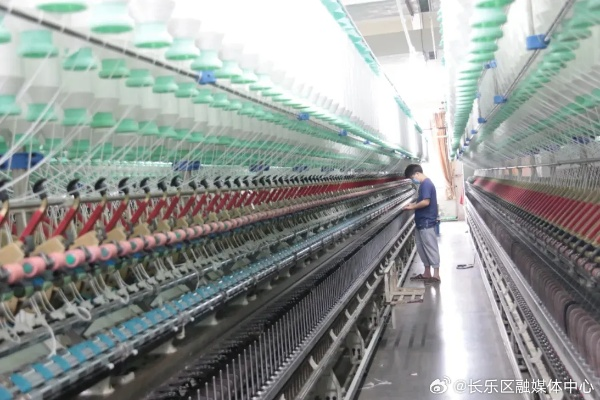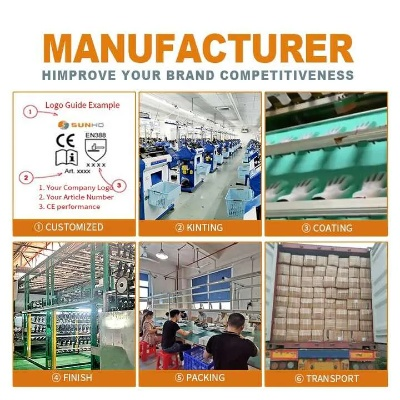The Dynamics of Anhuis Textile Industry:A Case Study
: Dynamics of Anhui's Textile Industry: A Case Study,Abstract: This study explores the evolution and current state of Anhui Province's textile industry, focusing on its historical development, technological advancements, and challenges faced in the contemporary market. The analysis draws from a comprehensive examination of industry-wide statistics, interviews with key players, and an examination of government policies and regulations. The findings highlight the importance of innovation in driving growth and the need for sustainable practices to ensure long-term success. The paper concludes with recommendations for policymakers and industry stakeholders to foster further development and competitiveness in the Anhui textile sector.
Introduction: The textile industry in Anhui province, located in the eastern part of China, has been a cornerstone of the local economy for decades. With its rich history and vast resources, this sector has not only contributed to the livelihoods of countless people but also played a significant role in shaping the region's economic landscape. In this article, we will explore the various aspects of the Anhui textile industry, including its production processes, market dynamics, and challenges faced by its entrepreneurs. By examining these factors, we aim to provide readers with a comprehensive understanding of the industry's importance and potential for growth.
Production Processes: At the heart of the Anhui textile industry lies the skilled labor force, which is responsible for producing a wide range of textile products. From simple cotton fabrics to complex silk garments, the industry boasts a diverse range of products that cater to both domestic and international markets. To ensure quality and consistency in production, many factories employ modern technology and advanced machinery, such as computerized knitting machines and automated dyeing systems. These tools not only speed up the production process but also improve product accuracy and durability.

Market Dynamics: The Anhui textile industry is highly competitive, with numerous players vying for market share. However, despite fierce competition, the industry has managed to maintain a steady growth rate over the years. This can be attributed to several factors, including the government's support for the industry through policies and subsidies, as well as the increasing demand for high-quality textile products from both domestic and international markets. Additionally, the industry's ability to adapt to changing consumer preferences and technological advancements has helped it stay ahead of the curve.
Challenges Faced by Entrepreneurs: Despite the industry's strengths, there are also several challenges that entrepreneurs face in their pursuit of success. One major challenge is the intense competition within the industry, which can make it difficult for newcomers to establish themselves. Additionally, the industry's reliance on natural resources and traditional manufacturing methods means that it is vulnerable to environmental changes and economic fluctuations. Finally, as the industry becomes more globalized, entrepreneurs must also contend with increased regulations and standards that require them to operate at a higher level of quality and efficiency.
Case Study: One example of how the Anhui textile industry has adapted to changing times is the rise of eco-friendly and sustainable products. As consumers become increasingly aware of the environmental impact of textile production, manufacturers have started to incorporate more eco-friendly practices into their operations. For example, some factories have begun using recycled materials in their production processes or implementing energy-efficient technologies to reduce waste and emissions. These efforts not only demonstrate the industry's commitment to sustainability but also help them differentiate themselves from competitors and attract new customers.
Conclusion: In conclusion, the Anhui textile industry is a vital component of the local economy, providing jobs and income for millions of people. Despite facing challenges such as intense competition, environmental concerns, and changing consumer preferences, the industry continues to grow and evolve. By embracing innovation and adopting sustainable practices, entrepreneurs can continue to build on the foundation laid by their predecessors and create a brighter future for the industry.
背景介绍
安徽,这片充满活力的土地上,隐藏着一群勤劳的小伙子,他们以纺织业为生,创办了自己的工厂,这家工厂不仅传承了传统工艺,还不断探索创新,为当地经济发展注入了新的活力。
人物介绍

主人公:小张
年龄:25岁 职业:纺织厂工人 籍贯:安徽某县
工厂概况
- 地理位置:工厂位于安徽某镇,交通便利,靠近市场和原料供应地。
- 生产设备:采用先进的纺织设备,确保产品质量和效率。
- 产品类型:主要生产各类纺织品,包括棉布、丝绸等。
传统工艺与创新实践
传统工艺:
(1)手工织造:采用传统的手工织造方法,注重细节和手工技巧。 (2)环保材料:使用环保材料,减少环境污染。 (3)质量控制:严格把控产品质量,确保每一件产品都符合标准。
创新实践:
(1)智能化生产:引入自动化设备,提高生产效率。 (2)绿色生产:采用环保染料和工艺,减少污染排放。 (3)个性化定制:提供个性化定制服务,满足不同客户的需求。

案例分析
为了更好地说明这个工厂的成功之处,我们可以引用一个具体的英文案例。
环保纺织品的成功案例
在安徽某纺织厂中,他们成功研发了一种新型环保纺织品,该产品采用了环保染料和工艺,不仅符合国家环保标准,而且具有很好的透气性和舒适度,该工厂通过与科研机构合作,不断探索和创新,使得这种环保纺织品在市场上获得了很高的认可度和销量,该工厂还注重员工培训和技术更新,不断提高生产效率和产品质量。
展望未来,安徽纺织小伙工厂将继续发扬传统工艺和创新精神,不断提高生产效率和产品质量,为当地经济发展做出更大的贡献,他们还将积极探索新的市场机会,拓展新的业务领域,为当地经济发展注入新的活力。
Articles related to the knowledge points of this article:
The Global Challenges and Opportunities Faced by Textile Factories
The Night Shift Dilemma:A Tale of Tension and Challenges at the Textile Mill



